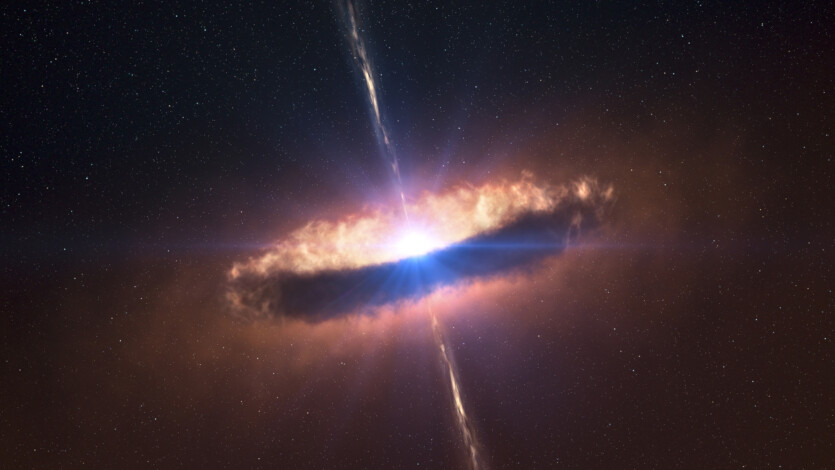
Astronomers using the «James Webb» telescope have discovered a class of hitherto unknown supermassive black holes in the early Universe.
This discovery is expected to help fill the gap between classical quasars — active nuclei of galaxies, and the «small red dots» discovered in 2022, which may turn out to be young quasars.
In classical quasars, supermassive black holes surrounded by dense dust clouds are located in the center of the galactic nucleus. The nuclei of these galaxies are powered by supermassive black holes and are easy to detect because they are extremely bright.
In December 2022, astrophysicists using the «James Webb» discovered a new type of active galactic nuclei, called Little Red Dots, because they appeared as tiny, faint red spots in images. Unlike classical quasars, these objects turned out to be smaller and dimmer, usually hidden behind a lot of dust.
Astronomers were interested in the connection between these two types of active galactic nuclei. So they decided to look for objects that would have intermediate properties. For more than a decade, astronomers have been searching for distant quasars using the Subaru Telescope in Hawaii and have identified several galaxies within the first billion years after the Big Bang.
Although the light from these galaxies was not typical of a classical quasar, the intensity of the light was too high to be the result of star formation alone. Scientists guessed that the active nuclei of these galaxies were hidden among the dust. At the time, astronomers were unable to prove that they were indeed a different type of active galactic nuclei due to the technical limitations of the telescopes of the time.
However, now, with the help of JWST, which has re-analyzed the mysterious objects discovered by Subaru, an international team of astronomers has confirmed the presence of gas moving rapidly under the influence of strong gravity supermassive black holes. The new study examined 13 distant galaxies with active galactic nuclei. In nine of them, characteristic features were observed a new population of active supermassive black holes. Astronomers emphasize that the newly discovered hidden quasars are, in fact, as bright as the classical ones, but the high level of dust hides the light from them, as in the case of «small red dots».
«These results are reliable due to the high quality of the light spectra of these objects with clear signs of gas fed by supermassive black holes. Although the number of new facilities is large, it is not so unexpected. The gap between the two known populations is very large, and indeed these new objects may belong to this missing population, but there are probably more of them», — emphasizes the team leader of astronomers, associate professor at the Austrian Institute of Science and Technology, Jorrit Matte.
According to him, as astronomers find more and more of these hidden quasars and collect data from additional observations, the light emitted by these galactic nuclei can be used to estimate the masses of stars and supermassive black holes in their galaxies. This information will provide new insights into how these giants evolved in the early Universe.
https://itc.ua/en/news/scientists-reveal-30-year-secret-of-huge-x-ray-flares-of-black-holes/
The results of the study are published on the preprint server arXiv
Source: LiveScience

Spelling error report
The following text will be sent to our editors: